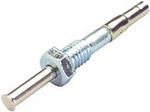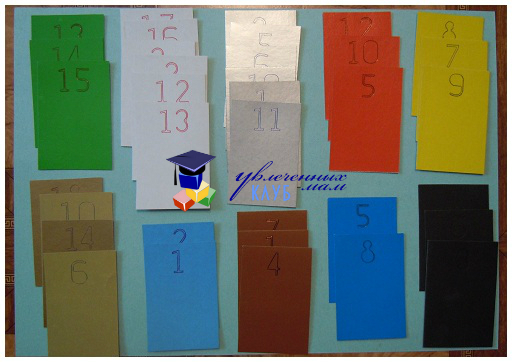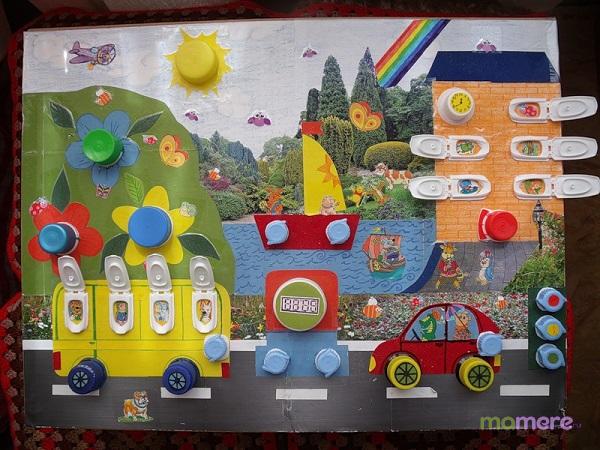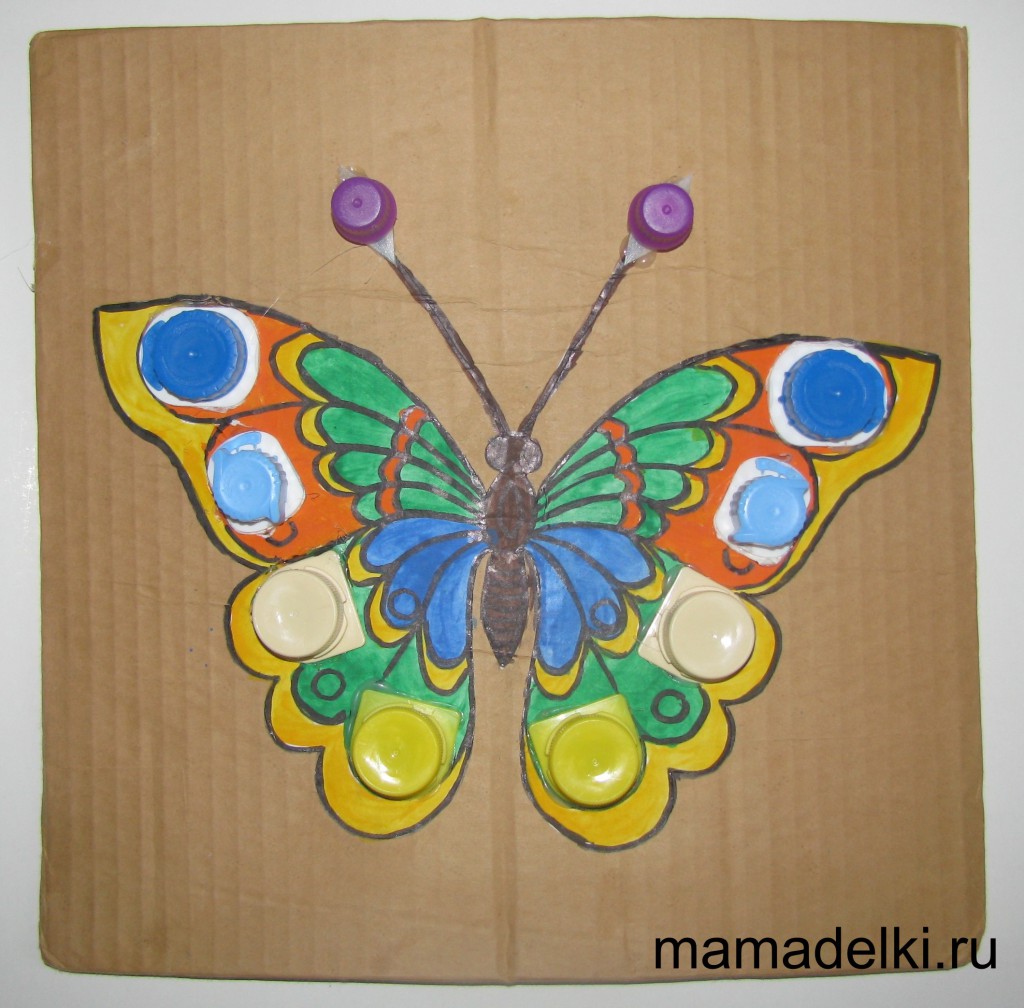Website sections
Editor's Choice:
- We plant currants so that there is a good harvest
- Infusion of tomato tops from pests
- How to get rid of raspberries forever
- How to permanently get rid of raspberries on the site
- Plots for a rich and good harvest Conspiracy before planting onions
- Best Tips for Proper Garden Care in the Fall
- How to clean greasy files and files
- Classification of geometric leveling Types of levels
- Automotive grease: ball bearing grease
- Screen printing at home: step by step instructions
Advertising
| Crafts from plastic covers. Games with caps from eugenia Educational games with caps from a bottle |
|
While working in kindergarten, she noticed that children show great interest in classes with non-traditional materials. But work with non-traditional materials contains great opportunities for the harmonious development of the child. These classes contribute to the development of his creativity, awaken the will, develop manual skills and labor skills, a sense of form, eye and color perception. Work on the composition contributes to the development of artistic taste. Tasks that are solved in the process of working with non-traditional materials:
I use non-traditional materials in classes on application and modeling-design, as well as in free games of children. The most affordable is natural material (acorns, cones, seeds, leaves). We collect this material with children on walks. Creating crafts and compositions from the gifts of nature, children get acquainted with the diversity of nature, learn to see new combinations in familiar forms, master various ways of fastening parts, and learn to be careful about nature. Numerous types of seeds and grains that are actively used to create work can also be attributed to natural ones. Also in my work I use various corks and caps from juice, sticks from chupa-chupsov, chin, buttons. With these materials I made several variations of games that can be used in free children's activities. Didactic games with traffic jams. What is developing:
How to play:
“Find the extra cork” Purpose: to develop the logical thinking of children. Course of the game: the teacher puts 5 traffic jams of the same color in a row and among them puts 1 traffic jam of a different color. Then he suggests that the child remove the excess cork or replace it with the desired cork in color. « Logical ChainsPurpose: to develop the logical thinking of children Means: corks from plastic bottles. Course of the game: the teacher begins to build a chain of traffic jams of two colors and offers the child to continue the series. “Draw a picture using traffic jams”Purpose: to develop the imagination and creativity of children. Means: corks from plastic bottles, pictures. Course of the game: the teacher offers the children to supplement the picture with the help of traffic jams. He asks how many traffic jams have taken and what color they are. "Dry pool" Purpose: development of fine motor skills of the hands; removal of emotional and psychological stress. Means: corks from plastic bottles, plastic basin. Hozanatii: The child lowers both hands into a basin with traffic jams and begins to sort them out. You can hide the toy in the basin and invite the child to find it. Didactic games with colorful clothespins. What is developing.
Finish the figure. Purpose: development of fine motor skills of the hands; removal of emotional and psychological stress, the ability to find and match colors with objects, the development of logical thinking. Equipment: items cut out of cardboard (tree, cloud, hedgehog ...) and clothespins of different colors. Course progress: The child attaches colored clothespins to the corresponding color object. For example: if it is a Christmas tree, then the child takes a green clothespin and attaches it. Finger massage. Also, with a clothespin, we alternately “bite” the nail phalanges (from the index to the little finger and back) onto the stressed syllables of the verse: Feed the fish. Imagine together with the baby that clothespins are small fish, and a circle or a square made of cardboard is a feeding trough. Well, the baby needs to help the fish have lunch, that is, attach them around the perimeter of the figure. It’s very interesting for children to “attach needles” to a hedgehog cut out of cardboard, etc. Hang underwear. And, of course, hanging handkerchiefs after washing and fastening them with clothespins. This is a simple task, even for a child who has repeatedly played with clothespins, it may turn out to be not so simple. Didactic games with buttons.What is developing:
Sort the buttons. Massage path. "Button patterns"To begin with, I suggested that the children have a little imagination and lay out various patterns on plastic plates, without using any patterns. Buttons are interesting in that they have a different shape, size, texture. "Remember and repeat"This game will help develop attention, memory. It requires two cards (divided into 9 squares) and two sets of buttons (18 pieces are identical in pairs One player leading, he lays out several buttons on his field. The second player remembers. Then the field is covered with a scarf, and the second player in his field must put the buttons in the same way as the leader. First, you can train on a small amount, adding gradually. "Pick a tree leaves"From buttons of a certain color, it is necessary to choose leaves for the tree (depending on the season) "Pick up the wheels of cars"Offer to pick up wheels by color, size "Tracks"Children were offered to conduct animals to the house through the mazes. It turns out, pinching the button with your finger, this is much more interesting and difficult to do. "Collect the beads"Passing a thread through the buttons, the original beads are obtained. They were appreciated by young fashionistas!We all know how important it is to develop and train fine motor skills in our babies. Motility affects the development of speech, so we try to come up with as many games as possible that will help us in this matter. I already talked about, showed our games with clothespins and templates for games with that train, including motor skills. I laid out photos and descriptions of various for the baby, which you can do with your own hands. She also showed a very interesting home-made game. Today I want to show you the games with covers that Evgenia's mom prepared for us. We are already familiar with the wonderful that Zhenya did and about which she spoke. Word to Wife: “I used a wide variety of lids: from soft drinks, juices, yoghurts, soaps, mayonnaise - here everyone has his own possibilities and imagination. This manual looks in the form of tablets. I took boxed cardboard and pasted it in two layers at an angle of 90 degrees, for strength. Then pasted on all sides with wrapping paper. She glued drawings on cardboard, painted with acrylic paints. And with the lids I acted like this: I cut off the necks of the bottles, and at the boxes from the juices I took the bases together with the lids. She stuck it all with a hot gun on the drawings. And the toy is ready. Dima really likes! Only the covers are lost - keep a replacement ready. ”
When Dima was one year old, he really liked to unscrew various caps on bottles, boxes, tubes, etc. so I decided to make him such a toy. Interestingly, he could only unscrew the little one, and after about six months he learned how to twist it. After all, when you unscrew, you twist in one direction, and you twist in the other. The kid knew this science himself. This is such a useful and interesting toy. And to make it is not at all difficult, and the most waste materials are needed for it - cardboard and covers from already used vessels.
The manual is designed for children of preschool age with the aim of developing fine motor skills and sensory development. The manual is mobile and multifunctional. The basis of the allowance is one, but there are several removable cards. Cards can be stored in a separate box, or can be stored on the basis of the allowance, like the rings of a pyramid. Manufacturing process: 1. Take a box of square shape, 2 plastic bottles and a stationery knife.
2. Cut holes in the box with a size equal to the diameter of the necks of the bottles. Cut the bottles, focusing on the height of the box.
3. Insert the cut-off bottles into the holes and secure so that they do not rotate with glue Moment.
4. Tape the box with self-adhesive paper.
5. Take universal household napkins of different colors and scissors.
6. Make holes in napkins, similar to holes in the box and application of subject pictures.
7. Pick up the corks, put them in a box and you can start the game. Games can be varied depending on the tasks. Didactic game“Draw a picture”Goal: imagination development Game progress: the child is invited to consider the picture and supplement the missing details with the help of traffic jams. Assignment: “Repair the car” "Cherry ripened"
Didactic game“Pick the cork you need in color”Goal:development of the ability to correlate the color of the subject. Game progress:the child is invited to consider the finished picture, for example, “Ship”, “Butterfly”, “Cherry Berries” and pick up the cork according to the sample. The child completes the task and names the cork color used.
Didactic game“Find the mistake and fix it”Goal: development of attention and logical thinking of children. Game progress:the child is invited to consider the finished picture, for example ,"Ship", where on board among the yellow circles there is a green circle. Or picture "Berries of ripe cherries",where the berries are depicted in green corks. Need to find a mistake, fix it.
Didactic game“Decorate the picture as planned”Goal:development of creativity and imagination. Game progress: tasks: “Dress up the Christmas tree”, “Make the flowers in the meadow clear”. Children use the color range of corks of their choice, called color.
Didactic game"Draw the caterpillar"Goal:development of logical thinking of children Game progress:first, the child is invited to consider the caterpillar, which already has parts of the body (these are circles of different colors). Need to find a pattern. The child "completes" the caterpillar.
|
New
- Jigsaw files: how to choose a blade for specific tasks
- DIY miter saw table
- Viking lawn mower petrol self-propelled mv 448
- Summary of modeling in the middle group: "Dragonfly
- Summary of GCD. Modeling. School preparatory group. Theme: "Insects." Summary of GCD in the educational field “Artistic and Aesthetic Development” (modeling) “Bee” Butterfly from plasticine - modeling of insects with children
- Synopsis of direct educational activities in modeling using salt dough with children of the middle group
- Abstract lessons in modeling in the middle group on the theme "Summer
- Useful exercises for children with caps. Didactic games with caps. Templates.
- Games with caps from eugenia Educational games with caps from a bottle
- Didactic games with buttons Templates for didactic game with caps




 First you need to assemble different covers with their basics. I cut the neck of bottles of lemonade, yogurt, juice, liquid soap. And at the boxes of juices tore off the basics along with the lids. And yet, lids for the same basis can be typed in different colors and more, or they’ll quickly get lost.
First you need to assemble different covers with their basics. I cut the neck of bottles of lemonade, yogurt, juice, liquid soap. And at the boxes of juices tore off the basics along with the lids. And yet, lids for the same basis can be typed in different colors and more, or they’ll quickly get lost. The basics in the form of tablets, I did so. I took a regular boxboard, pasted it with paper for strength. She pasted a drawing and let it dry thoroughly under a load of thick books. When everything dried up, I painted the drawings with acrylic paints - they do not get dirty when used. Drawn a black marker on the office. On the cars the train pasted pictures of animals. I glued the basics of the covers to the drawings with a hot gun. But another strong glue is also possible.
The basics in the form of tablets, I did so. I took a regular boxboard, pasted it with paper for strength. She pasted a drawing and let it dry thoroughly under a load of thick books. When everything dried up, I painted the drawings with acrylic paints - they do not get dirty when used. Drawn a black marker on the office. On the cars the train pasted pictures of animals. I glued the basics of the covers to the drawings with a hot gun. But another strong glue is also possible.  Sizes of cardboard.
Sizes of cardboard.


























